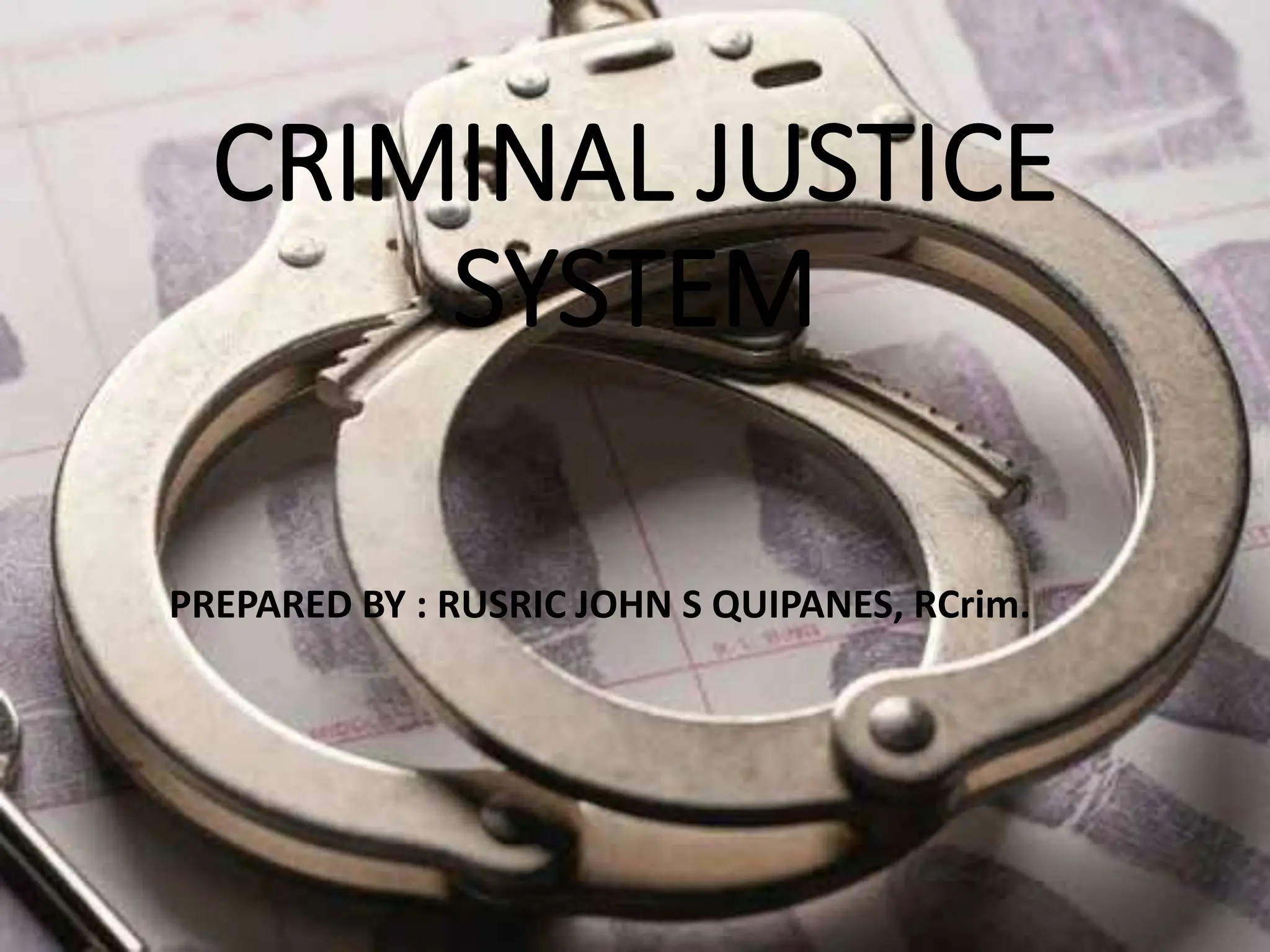The criminal justice system began in ancient times to control crime and establish new forms of punishment. The first system was created by the British in America during the revolution, using hanging as the primary punishment. Over time, new forms of punishment developed, including exile, branding, mutilation, and flogging. A police department was established in 1829 in London to develop the modern criminal justice system with three pillars - police, courts, and corrections. Today the criminal justice system aims to fight crime, protect the public, help victims, hold offenders accountable, and rehabilitate offenders.






































